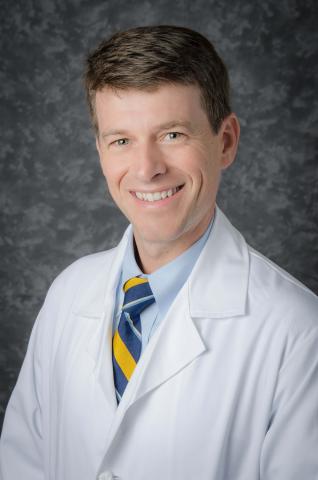
Every year, Otolaryngology Residency programs receive hundreds of applications for a few coveted residency positions. While The Match works efficiently to determine the ultimate outcome of this process, the critical step of selecting applicants for a limited number of interview positions is plagued with inefficiency and inequity.
As part of a task force within the Otolaryngology Program Director's Organization Council, UC San Francisco Department of Otolaryngology – Head and Neck Surgery (UCSF OHNS)'s Steven Pletcher, MD adopted and implemented a system which allows applicants to signal programs of particular interest and provides programs with valuable information when selecting candidates to interview. The findings of this first application of signaling in medicine were recently published in Academic Medicine.
At the time of residency application submission, applicants were provided with five "signals" to send to programs of particular interest. Signals resulted in a dramatic increase in the likelihood of receiving an interview.
"The signaling process is a more equitable way for applicants to stand out to their favorite programs," said Dr. Pletcher, a professor of clinical otolaryngology and the director of the UCSF OHNS Residency Program. "It provides applicants with a valuable tool, particularly in a competitive specialty like OHNS."
In the 2021 application cycle, the average otolaryngology candidate applied to more than half of the programs in the country. Traditionally, applicants employ informal signals to demonstrate interest, like visiting rotations or advocacy from mentors. These opportunities are not accessible to many applicants and were significantly curtailed during the COVID-19 pandemic.
"Increasing application numbers make it difficult for applicants to stand out to their chosen programs and for programs to identify applicants with sincere interest," write Dr. Pletcher et al. "We are particularly enthusiastic that signaling markedly increased applicants' ability to obtain interview offers from programs of particular interest and that this effect was present across the spectrum of applicant competitiveness."
The team noted that many specialties face high application numbers and could benefit from a similar preference signaling process. Following the model implemented by Otolaryngology and based upon the success of this innovative project, Urology, Internal Medicine, Dermatology, and General Surgery have implemented signaling programs. "In Otolaryngology, signaling has shown to be a win-win for Programs and Applicants, and both groups enthusiastically supported continuing the program," Pletcher notes. "Perhaps equally exciting is that this innovation has re-invigorated a stagnant process. Signaling simulates a very low application cap and data from this project can facilitate future innovation."
As part of the OPDO Council Signaling taskforce, Dr. Pletcher partnered with C.W. David Chang, MD, FACS, Marc C. Thorne, MD, MPH, FACS, and Sonya Malekzadeh, MD, FACS. Dr. Chang is an associate professor and the Jerry W. Templer, MD Faculty Scholar in Otolaryngology in the Department of OHNS at the University of Missouri Health Care. Dr. Thorne is a professor and the associate chair for education and quality in the Department of OHNS at the University of Michigan Medicine. Dr. Malekzadeh is a professor and the vice chair for education in the Department of OHNS at MedStar Georgetown University Hospital.




